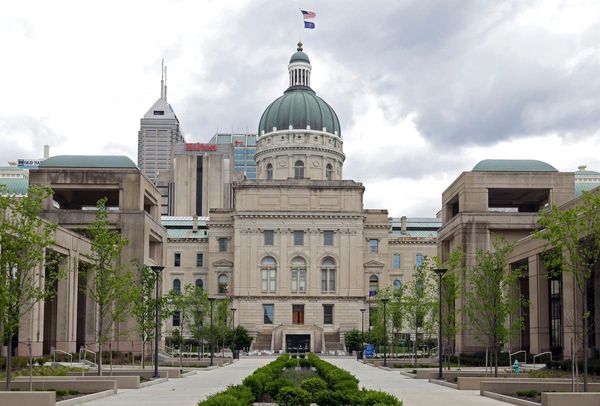
MINMI, on the outskirts of Newcastle, owes its name to once being the place of the giant lily.
The small, former mining township is also a place of secrets.
Many more secrets may still lie hidden, as the modern urban sprawl draws ever closer to the once sleepy village.
A fear of overdevelopment, meaning more loss of bushland, precious wildlife habitat and damage to the fabric of the area's, some say, 'unique' identity has many residents seriously concerned.
For a start, amid surrounding bushland there are old stone bridges, the site of Chinese market gardens, a 'flood-free' coal line stretching 26 kilometres inland, neglected rail tunnels, an old, mystery furnace shaft towering above the eucalypts and at least two historic, whitewashed cellars hidden below lush turf.
The original, still surviving town virtually closed down overnight 100 years ago this year by the Hunter Valley's colossus of coal - John 'Baron' Brown (1851-1930).
Miners at the Back Creek pit refused to work on January 23, 1924, as a mark of respect to the sudden death of an old pit hand. The miners buried their workmate and 'Baron' Brown then buried the town, throwing 800 breadwinners out of work.
And closing the mine was all done on an apparent whim, to show the miners who was boss. Or was it?
Closing the mine meant enormous changes for a place with a population of about 3000. For a start, miners were always a thirsty lot, but by 1935, only one pub remained.
Yet, in boom times, in 1890, tiny Minmi had nine hotels operating concurrently. It seems unbelievable today, but some people say up to 11 pubs once flourished in almost forgotten Minmi. The real figure, revealed by Hunter rail/pub historian Ed Tonks late last year, was 15 hotels between 1865 and 1921.
The downfall of old Minmi probably really began about 1909 with an exodus of miners continuing until 1912. The Maitland Coalfields had emerged as a competitor to Minmi, so mining families left for Weston, Kurri Kurri and Cessnock where the pits paid a lot more.
Many also took their rough, unpainted shacks with them as Brown owned the whole town, lock stock and barrel. Miners had to pay rent on their home sites.
By March 1945, a Coal Commission inquiry labelled Minmi as "John Brown's ghost town".
Yet, despite the tag, Minmi had three mines, including Stockrington No I and 2, operated by J & A Brown (later Coal & Allied) and the Abermain-Seaham group.

Surprisingly, Minmi township was not supplied with electricity until 1949. Power, however, had been supplied from the mines to various company properties, including the under-manager's house, the school and Brown's now virtually unknown experimental (or model) farm, including to dairy cool rooms underneath.
John Brown's farm was an extravagant experiment in self-reliance. Developed between 1905 and 1913 by the millionaire coal magnate and shipowner, it was stocked with the best of everything, from prized poultry to cattle.
It was where he stabled his horses, and it even had a special turkey house.
The model farm, just north-east of Minmi township, was a showpiece made of red bricks from Brown's brickyards at Richmond Vale. All the above-ground buildings were demolished in 1982.
Close by, beside a railway embankment, was the Orange Grove platform. Every morning, it was said, an engine driver would collect fresh butter and eggs from the farm, then take them as far as Hexham to be put on the Newcastle-bound train to be soon delivered to Brown's table at his Wolfe Street home (now the site of Segenhoe apartments) by his chauffeur.
Brown, the senior managing partner of J & A Brown, was a giant of the Hunter's early coal mining history. And while his home was in Newcastle, he never lived at his model farm. But he did own another home (since demolished) called The Garden House, on a hill overlooking the other end of town.
Back at the model farm, its underground dairy cool rooms were excavated into a large earth mound on the edge of the swamp. Still surviving years ago (but now on private property) were two large, whitewashed vaults, each measuring about six metres by three metres, which held the farm's bountiful dairy produce.
They were once in a remarkable state of preservation, although the last occupier apparently once stored motorcycle parts in them.
There were also past suspicions there might be three more large barrel-vaulted cool rooms still hidden on site.
For whatever he did, John Brown thought big. Under his leadership, he established coal agencies both in Australia and abroad.
He also owned a fleet of colliers and tugs while running mines and importing locomotives and rolling stock, plus building engineering facilities to service them.
The shrewd and tough Brown became a legend in his lifetime, and was reported at one time to be the wealthiest man in Australia, although some people suggest Brown liked to be a larger-than-life figure, to perhaps emphasise his achievements.
One thing is certain though. He was a prominent sportsman, with one of his horses winning the 1909 Melbourne Cup. After he won, he rewarded his Newcastle office staff with salary increases.
Brown also ran magnificent stud properties (including a lesser one at Motto Farm, near Raymond Terrace). He may have once owned up to 500 horses.
The late Newcastle historian, John Turner, said the astute Brown had actually "polished up" and expanded the large fortune that had been created by his father and uncle.
"There were also richer men than Brown (but) these pastoralists never advertised their wealth," Dr Turner said.
"He was memorable because of what he did, was a single figure and not a company, he was chairman of the Colliery Proprietors Association and he became a symbol of what miners hated about their industry.
"He became an ogre of industry, and Brown himself did nothing to get rid of this image.
"And as for closing Minmi, I don't think he did so in a fit of pique.
"There were good economic reasons, the mine was dying anyway."







